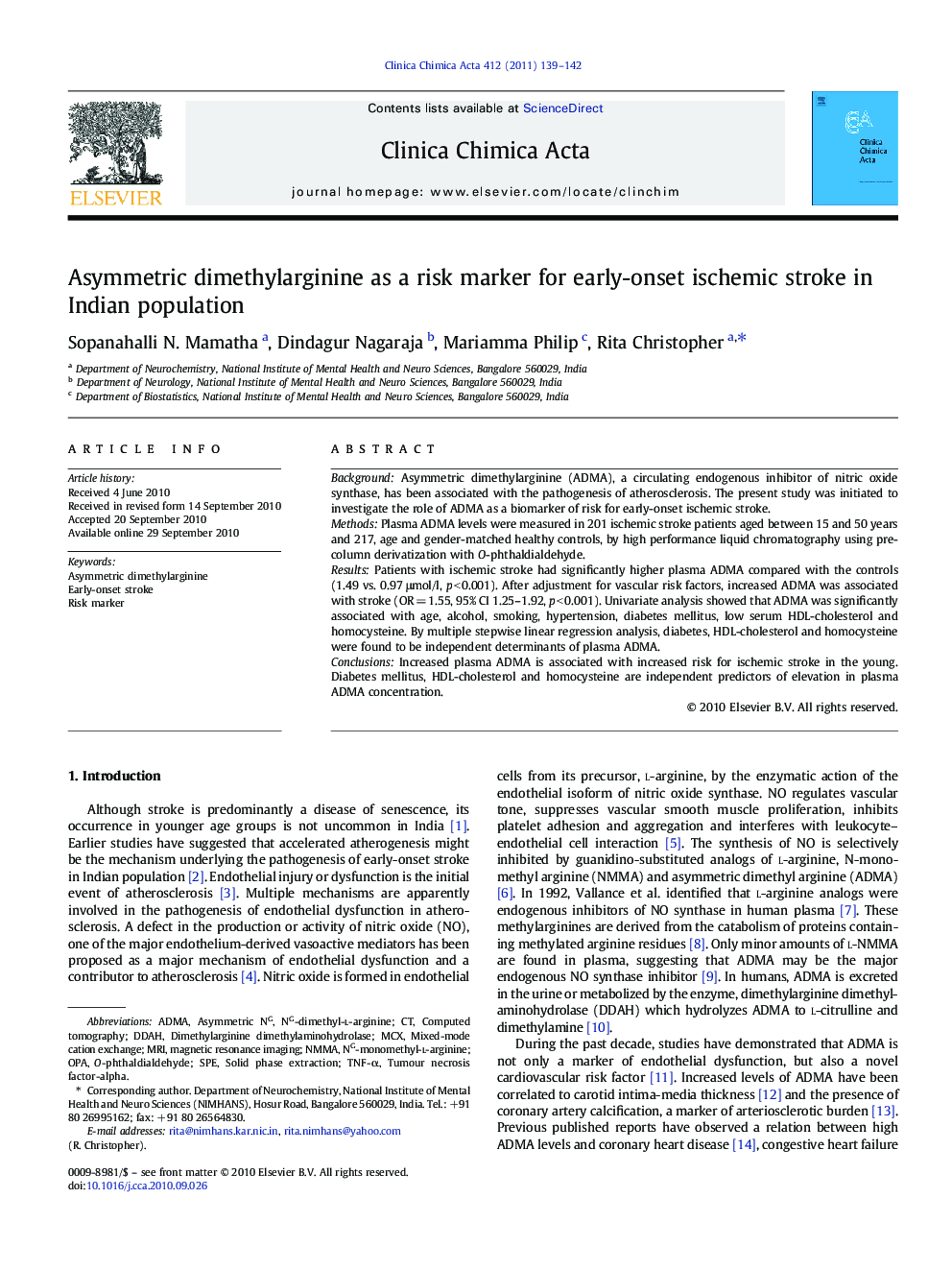| Article ID | Journal | Published Year | Pages | File Type |
|---|---|---|---|---|
| 1965649 | Clinica Chimica Acta | 2011 | 4 Pages |
BackgroundAsymmetric dimethylarginine (ADMA), a circulating endogenous inhibitor of nitric oxide synthase, has been associated with the pathogenesis of atherosclerosis. The present study was initiated to investigate the role of ADMA as a biomarker of risk for early-onset ischemic stroke.MethodsPlasma ADMA levels were measured in 201 ischemic stroke patients aged between 15 and 50 years and 217, age and gender-matched healthy controls, by high performance liquid chromatography using pre-column derivatization with O-phthaldialdehyde.ResultsPatients with ischemic stroke had significantly higher plasma ADMA compared with the controls (1.49 vs. 0.97 μmol/l, p < 0.001). After adjustment for vascular risk factors, increased ADMA was associated with stroke (OR = 1.55, 95% CI 1.25–1.92, p < 0.001). Univariate analysis showed that ADMA was significantly associated with age, alcohol, smoking, hypertension, diabetes mellitus, low serum HDL-cholesterol and homocysteine. By multiple stepwise linear regression analysis, diabetes, HDL-cholesterol and homocysteine were found to be independent determinants of plasma ADMA.ConclusionsIncreased plasma ADMA is associated with increased risk for ischemic stroke in the young. Diabetes mellitus, HDL-cholesterol and homocysteine are independent predictors of elevation in plasma ADMA concentration.
